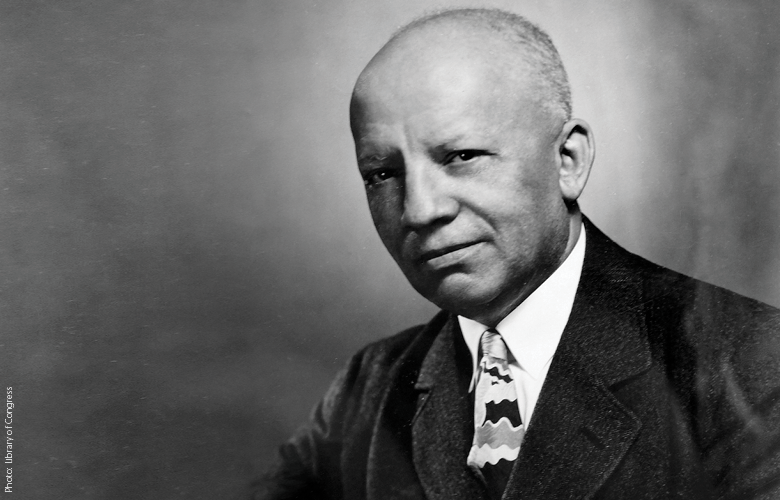
Growing up on the south side of Chicago, in an area known as Washington Heights, my family and friends often looked forward to the many celebratory activities made available during the month of February to acknowledge our Black heritage. Interestingly, a place where some of these activities were often held in the community was the Carter G. Woodson Regional Public Library. Why is this library the quintessential place for Black History Month to be commemorated? Let’s see . . .
The acknowledgement and celebration of Black History Month dates back to 1915 when Carter G. Woodson traveled to Chicago to take part in a national celebration of the 50th anniversary of the emancipation. Although a resident of Washington D.C., Woodson had previously attended the University of Chicago, where he obtained his bachelor’s and master’s degrees, and he still had many friends in the Chicagoland area. This event inspired Woodson to do more in the spirit of acknowledging and celebrating Black history and heritage. Before he left Chicago, he founded the Association for the Study of Negro Life and History (ASNLH)1 with like-minded colleagues. And then just a year later, he started the Journal of Negro History, which elevates the achievements of Black Americans.
In 1926, Woodson along with the ASNLH membership sponsored a national Negro History Week in the second week of February—a time purposely chosen to coincide with the birthdays of Abraham Lincoln and Frederick Douglass. This effort inspired schools and communities nationwide to organize local celebrations, and organizations hosted special week-long events. As time went on, mayors across the country began issuing proclamations commemorating the week, and with the civil rights movement of the 1960s, Negro History Week evolved into Black History Month. Then in 1976, Black History Month was officially and nationally recognized by President Gerald Ford.
Although it is only one of his numerous accomplishments, Black History Month exists due to Woodson’s creativity and determination, earning him the title “the Father of Black History Month.” So celebrating Black History Month in the Carter G. Woodson Regional Public Library truly is the quintessential place for Black History to be commemorated in Chicago.
“You must give your own story to the world.”
—Carter G. Woodson
| Katari Coleman co-leads the National Center on Afterschool and Summer Enrichment (NCASE), which works to ensure children can access high-quality afterschool learning. She is also a member of the Equity, Diversity. and Inclusion Committee and the Afro Diaspora ERG. |
1The Association for the Study of Negro Life and History continues today as the Association for the Study of African American Life and History or ASALH©. The mission of the ASALH is to “promote, research, preserve, interpret and disseminate information about Black life, history and culture to the global community.”

Comments
Add new comment